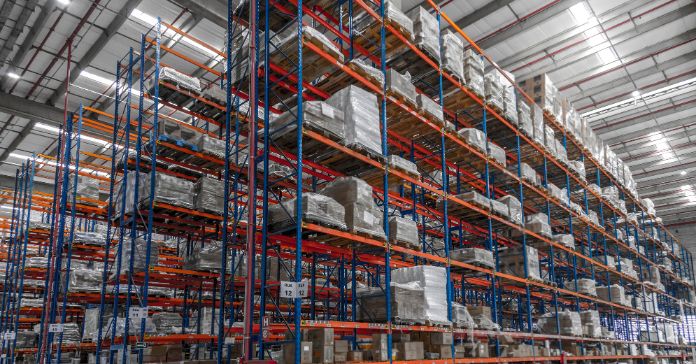
In the logistics and supply chain industry, there are six strategies for optimizing warehouse space that can improve operational efficiency and accommodate growing inventory demands. With a strategic approach to space management, businesses can overcome the limitations of their physical warehouse footprint, ensuring they can meet customer demands without the need for costly expansions.
Before undertaking any of these changes, confer with safety experts, building code experts, and warehouse racking professionals to determine if your warehouse is a good candidate for these kinds of alternations.
Analyzing Layout and Current Space Usage
The first step in optimizing warehouse space involves conducting a thorough analysis of the current layout and space usage. This process identifies areas where space is underutilized or inefficiently allocated. By mapping out the warehouse and tracking the flow of goods, companies can pinpoint bottlenecks and areas of congestion that hinder productivity. Adjusting the layout to streamline operations can significantly increase the capacity and functionality of the existing space.
Reducing Aisle Width if Feasible
One effective way to create more usable space within a warehouse is by reducing aisle width, provided it’s safe and operationally feasible to do so. Narrower aisles mean more room for storage while maintaining necessary access for racking with forklifts and for picking and replenishment activities. This strategy requires careful consideration of the types of lifting equipment used and ensuring compliance with safety regulations.
Adding Double Deep Rack Capability
Incorporating double deep rack systems or installing taller racks can dramatically increase storage capacity. Double deep racking allows for back-to-back pallet storage, effectively doubling the storage density in given areas.
Take care to review whether your warehouse needs new pallet racks or racks that are sturdier with higher load capacities and updated installation techniques to augment rack storage space. You may also need a new reach truck with the ability to extend two-pallet lengths deep into the racking for pallet retrieval.
Adding a Mezzanine To Get Administrative Work Off the Floor
Adding a mezzanine is an innovative solution for removing administrative functions from the warehouse floor, thereby freeing up valuable space for core operational activities. Mezzanines can serve as offices, break rooms, or storage for less frequently accessed items, making efficient use of overhead space that would otherwise go unused.
Improving Flow Into and Out of the Warehouse
Optimizing the flow of goods into and out of the warehouse is crucial for preventing delays and reducing holding costs. This may involve reconfiguring docks, redesigning receiving and dispatch areas, or implementing cross-docking techniques to minimize handling and storage times. An efficient flow ensures products move quickly through the warehouse, improving turnaround times, using rack space efficiently, and boosting overall productivity.
Adding Half-Pallet Storage
For items that don’t require full pallet storage, adding half-pallet locations can significantly increase space utilization. This approach allows for more flexible storage options without wasting space, accommodating more goods packed by half-pallets. By tailoring storage solutions to the size of the inventory, warehouses can achieve a higher density of storage and improve the organization of goods.
By implementing these strategies for optimizing warehouse space, businesses can significantly enhance their storage capacity and operational efficiency. Each of these measures contributes to a more productive and streamlined warehouse operation.







